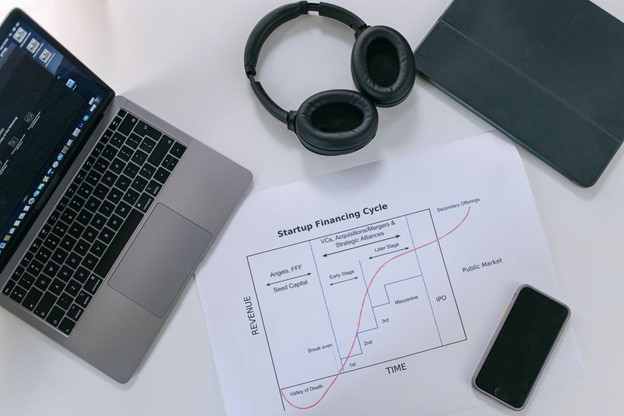Paid search advertising, often referred to as Pay-Per-Click (PPC), is a powerful tool in the digital marketing landscape. When executed effectively, it can significantly boost your online presence, drive targeted traffic, and, most importantly, maximize your Return on Investment (ROI). In this guide, we’ll delve into the strategies and best practices for making the most of your paid search advertising campaigns.
Understanding Paid Search Advertising
Paid search advertising operates on a simple premise: you pay a fee each time a user clicks on your ad. It’s a form of online advertising where your ads appear prominently on search engine results pages (SERPs), often above or below organic search results. Google Ads, with its extensive reach, is one of the most well-known platforms for this type of advertising.
Benefits of Paid Search Advertising
Before we delve into strategies, let’s explore why paid search advertising is worth your investment:
Immediate Visibility: Your ads appear at the top of search results, giving your brand instant visibility to potential customers actively searching for products or services like yours.
Highly Targeted: You have control over who sees your ads, allowing you to reach specific demographics, locations, and even tailor messages to particular devices.
Pay for Performance: With PPC, you only pay when someone clicks on your ad, ensuring that you’re investing in potential customers rather than just impressions.
Measurable Results: Paid search advertising provides a wealth of data, allowing you to track performance, adjust campaigns in real-time, and measure ROI accurately.

Strategies for Maximizing ROI
Now, let’s dive into strategies for making the most of your paid search advertising campaigns:
- Set Clear Goals and Define KPIs:
Before launching your campaign, establish clear goals. What do you want to achieve? Whether it’s boosting sales, increasing website traffic, or generating leads, your objectives should be specific, measurable, and time-bound. Common Key Performance Indicators (KPIs) for paid search advertising include Click-Through Rate (CTR), Conversion Rate, and Return on Ad Spend (ROAS).
- Thorough Keyword Research:
Keywords are the foundation of your PPC campaign. Use keyword research tools, such as Google’s Keyword Planner, to identify the keywords and phrases relevant to your business. Focus on keywords with a balance between search volume and competitiveness. Long-tail keywords can be particularly effective for targeting specific niches.
- Ad Group Segmentation:
Group related keywords into ad groups. This segmentation allows you to create highly relevant ad copy and landing pages for each group, which in turn improves your Quality Score and ad relevance.
- Craft Compelling Ad Copy:
Your ad copy should be concise, persuasive, and highly relevant to the user’s search query. Include keywords in your ad copy to signal relevance and attract the right audience. Strong calls to action can boost CTR.
- Optimize Landing Pages:
Once users click on your ad, they should land on a dedicated, relevant landing page. Ensure that your landing pages load quickly, are mobile-friendly, and have compelling content that guides users towards your desired action, whether that’s a purchase, sign-up, or inquiry.
- Bid Management:
Carefully manage your bids to achieve a balance between ad position and cost. It’s not always necessary to be in the top position; aim for a position that offers the best ROI. Automated bidding strategies, like Target ROAS or Target CPA, can be effective in optimizing bids based on your goals.
- A/B Testing:
Experiment with different ad variations and landing page designs. A/B testing helps identify which elements are most effective. Test different headlines, ad copy, images, and calls to action to determine what resonates most with your audience.
- Negative Keywords:
Use negative keywords to filter out irrelevant traffic. For example, if you’re selling high-end watches, you might add “cheap” or “affordable” as negative keywords to avoid attracting users looking for budget options.
- Continuous Monitoring and Optimization:
Paid search advertising is not a set-and-forget strategy. Regularly monitor the performance of your campaigns, adjust keywords, ad copy, and bids, and experiment with different ad extensions. Make data-driven decisions to improve your campaign’s effectiveness.
- Quality Score Optimization:
Improve your Quality Score by creating highly relevant ads and landing pages, choosing appropriate keywords, and ensuring a good user experience. A higher Quality Score can lead to lower costs and better ad placements.
- Ad Extensions:
Leverage ad extensions to provide additional information to users. Extensions like site links, callouts, and structured snippets can enhance your ad’s visibility and provide more context.
- Geo-Targeting:
If your business caters to specific geographic locations, use geo-targeting to focus your ads on those areas. This ensures your budget is spent efficiently on potential customers in your target market.
Conclusion
Paid search advertising is a dynamic and results-driven strategy that, when managed effectively, can provide a remarkable ROI. By setting clear goals, conducting thorough keyword research, optimizing ad copy and landing pages, and continually monitoring and optimizing your campaigns, you can maximize your ROI and grow your business. Remember that the digital advertising landscape is constantly evolving, so stay adaptive and open to change. With dedication and a data-driven approach of a digital marketing agency in Singapore, you can unlock the full potential of paid search advertising for your business.






0 Comments